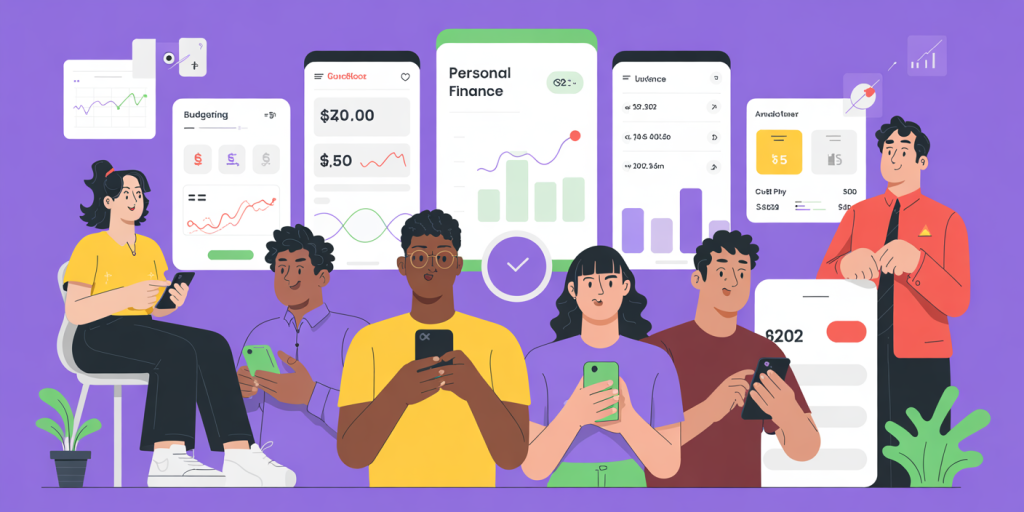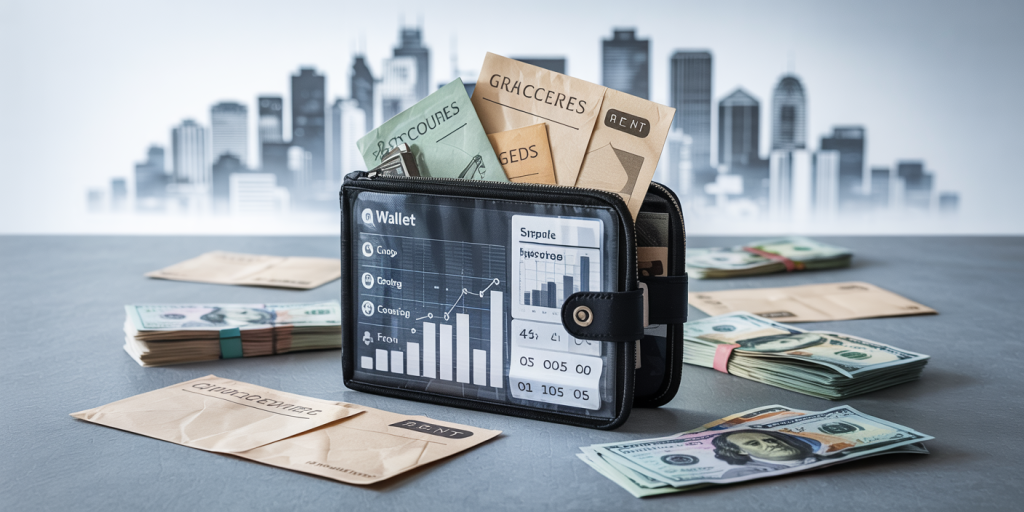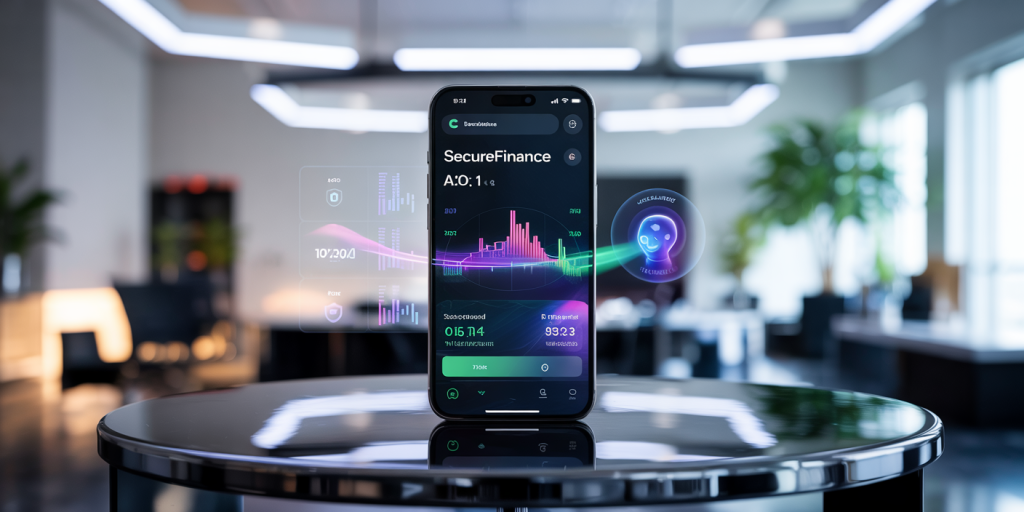The 10 Best Personal Finance Apps to Manage Your Money
Anúncios
In today’s fast-paced digital world, managing your personal finances effectively can feel overwhelming without the right tools. With the surge of personal finance apps, individuals now have powerful resources at their fingertips to track spending, budget wisely, invest smartly, and achieve financial goals. These apps bring convenience and clarity, often transforming confusing money habits into clear, manageable actions. According to a recent study by Statista, over 60% of millennials in the U.S. rely on financial apps to track their expenses, highlighting the growing relevance of these digital solutions.

This article explores the ten best personal finance apps that cater to various financial needs, including budgeting, investing, bill management, and credit tracking. Whether you’re a novice looking to take control of your daily expenses or an experienced investor seeking sophisticated tools, understanding the features and benefits of these apps will empower you to make informed financial decisions.
Anúncios
—
Why Personal Finance Apps Are Essential
Personal finance apps have become indispensable for managing money in the digital age. They not only streamline budgeting but also provide actionable insights by aggregating data from multiple accounts. For example, apps like Mint and YNAB (You Need a Budget) offer real-time transaction tracking and personalized recommendations, allowing users to optimize spending categories and save money efficiently.
Moreover, the rise of mobile banking and digital wallets supplements these apps, making fund transfers and payments seamless. A report by The Financial Brand shows that 51% of financial institutions prioritize mobile app upgrades, signaling how integral these tools are in today’s economy. Beyond simple tracking, these apps help users set and meet goals—be it saving for a down payment, paying off debt, or planning retirement—thus playing a crucial role in financial wellness.
Top 10 Personal Finance Apps You Should Consider
1. Mint: Comprehensive Budgeting and Bill Paying
Mint, developed by Intuit, remains one of the most popular free personal finance apps due to its user-friendly interface and comprehensive features. It securely connects to bank accounts, credit cards, and bills, providing an all-in-one dashboard. Users can categorize expenses, create custom budgets, and receive bill reminders.
For example, a college student named Sarah used Mint to track her weekly spending on dining and entertainment. By setting monthly budgets, she reduced unnecessary expenses by 20% within three months, demonstrating Mint’s practical impact on everyday finances.
2. You Need A Budget (YNAB): Zero-Based Budgeting Focus
YNAB follows a unique zero-based budgeting system, where every dollar is assigned a specific purpose. This app is ideal for users committed to mastering their financial discipline and living within their means. YNAB provides educational workshops and real-time syncing to multiple devices.

A notable case involves a freelance designer who, after adopting YNAB, managed to increase savings by $10,000 in a year due to disciplined tracking and conscious spending decisions.
3. Personal Capital: Investment and Net Worth Tracking
Personal Capital blends personal finance management with investment tracking. Apart from budgeting, it offers tools to analyze portfolios, retirement readiness, and cash flow. Integration with various financial accounts offers a holistic financial picture.
An investor in his 40s used Personal Capital’s retirement planner to adjust his 401(k) contributions, resulting in an improved projected retirement income by 15%. This example showcases the app’s ability to guide investment choices based on data and analytics.
4. PocketGuard: Simple and Intuitive Spending Control
PocketGuard is designed to minimize financial anxiety by showing users how much “safe to spend” money they actually have after deducting bills and savings goals. Its simplicity attracts users who prefer straightforward monitoring over detailed analytics.
Consider the case of Tim, a recent graduate who often felt overwhelmed by his paycheck’s disappearance within days. PocketGuard helped him visualize disposable income clearly, encouraging better spending habits.
Additional Apps That Enhance Financial Management
5. Acorns: Automated Micro-Investing
Acorns is perfect for beginners who want to develop investment habits without large upfront capital. It rounds up everyday purchases to the nearest dollar and invests the spare change in diversified portfolios. This passive investment approach reduces the psychological barriers related to investing.
For instance, a teacher who started with Acorns consistently contributed small amounts, leading to a portfolio growth of over 8% annually, proving the power of micro-investing.
6. Goodbudget: Envelope Budgeting System
Goodbudget operates on the traditional envelope budgeting concept but digitized for modern convenience. It is especially useful for couples who want to manage shared finances transparently.
Take the case of a young couple managing rent, groceries, and entertainment expenses through shared envelopes. This method helped them avoid overdraft fees and plan monthly expenditures better.
7. Credit Karma: Credit Score Monitoring and Insights
Understanding credit health is critical for financial success. Credit Karma offers free credit score tracking, personalized credit card, and loan recommendations. It also provides alerts on credit report changes, enabling users to catch fraudulent activity early.
A recent user reported improving her credit score by 60 points after following Credit Karma’s suggestions to pay down high-interest debt.
Comparative Analysis of Key Features
| App Name | Budgeting | Investment Tracking | Bill Reminders | Credit Monitoring | Cost |
|---|---|---|---|---|---|
| Mint | Yes | Limited | Yes | No | Free |
| You Need A Budget | Yes | No | Yes | No | $14.99/month or $99/year |
| Personal Capital | Yes | Yes | Yes | No | Free |
| PocketGuard | Yes | No | Yes | No | Free / $4.99/month Premium |
| Acorns | No | Yes | No | No | $3-$5/month |
| Goodbudget | Yes | No | No | No | Free / $7/month Premium |
| Credit Karma | No | No | No | Yes | Free |
This table illustrates how different apps cater to varied user needs. For instance, Personal Capital is suitable for those wanting more investment insights, while YNAB appeals to strict budgeters. Meanwhile, Credit Karma focuses exclusively on credit health, a vital area often overlooked in budgeting apps.
How to Choose the Right App for Your Financial Goals
Selecting the appropriate personal finance app depends largely on your goals and financial complexity. Beginners aiming for basic budgeting might prioritize apps like Mint or PocketGuard for simplicity and automation. Those interested in building wealth through investing may prefer Personal Capital or Acorns. Individuals working to repair or enhance their credit profile will find Credit Karma invaluable.
To illustrate, Jane, a 30-year-old professional with multiple income streams, chose Personal Capital for its deep investment analytics, whereas her brother chose Goodbudget to manage joint household expenses. Their contrasting choices emphasize the importance of aligning an app’s features with personal priorities.
Moreover, consider security features like two-factor authentication and bank-grade encryption since financial data sensitivity requires robust protection. Reading user reviews and trying free versions before committing to subscriptions is advisable.
The Future of Personal Finance Apps: Trends and Innovations
The personal finance app market is rapidly evolving, driven by a growing demand for smarter, AI-powered tools. Artificial intelligence and machine learning are increasingly used to provide personalized financial advice, predictive budgeting, and even fraud prevention. For example, apps are beginning to analyze spending patterns to anticipate upcoming expenses or automatically adjust budgets.

Blockchain technology also holds promise in enhancing security and transparency, especially in investment and lending platforms. Additionally, voice-activated assistants integrated into finance apps are improving accessibility, allowing users to manage money hands-free effectively.
According to MarketsandMarkets, the global personal finance software market size is expected to reach $1.57 billion by 2027, growing at a CAGR of 6.3%. This growth reflects wider adoption and continuous innovation, ultimately empowering users with more tailored and effective money management solutions.
As users become more financially literate and dependent on mobile solutions, app developers will likely prioritize multi-platform integration, real-time collaboration (useful for families and small businesses), and expanded financial literacy education inside apps. The future could also see social finance features, where people share saving challenges or investment tips, combining social engagement with financial wellness.
In conclusion, personal finance apps are invaluable tools that enable users to take control of their money, plan for the future, and improve financial health. With so many options available, understanding the specific features and benefits of each app ensures you find one aligned with your unique financial situation and goals. Embracing these digital helpers with consideration and care can lead to greater financial confidence and stability.
